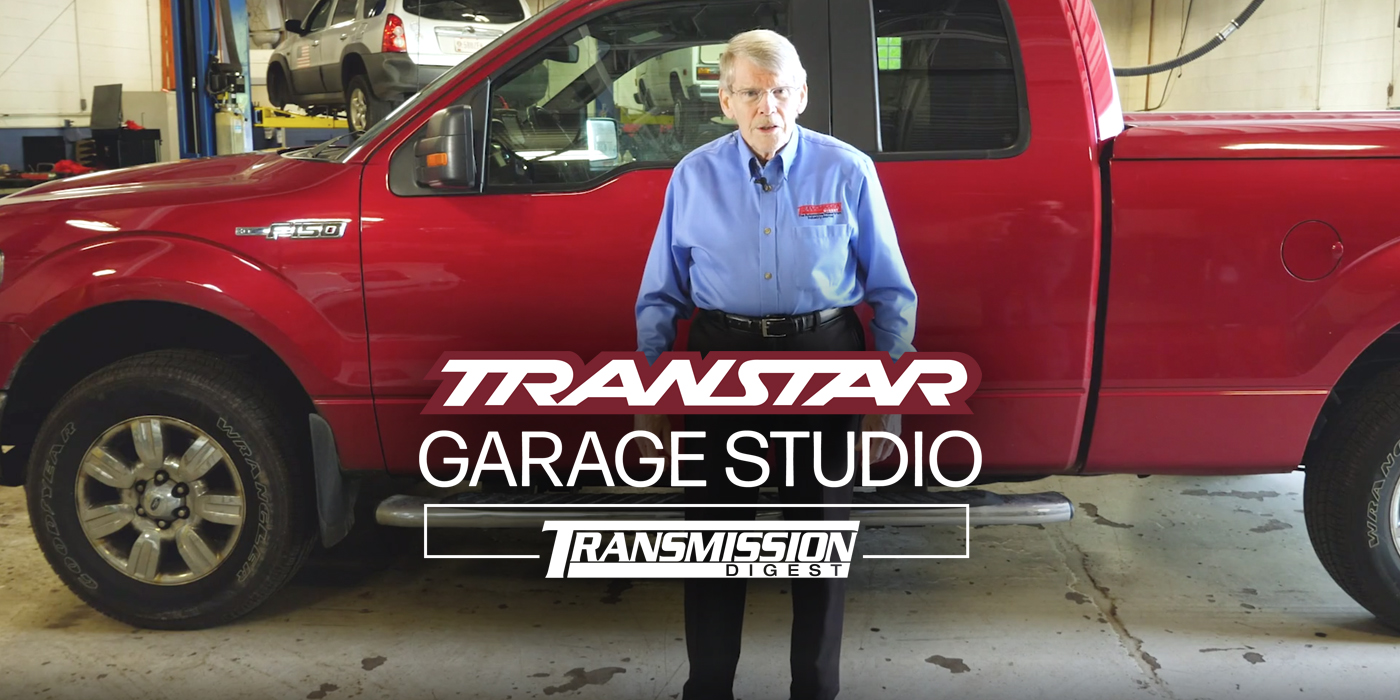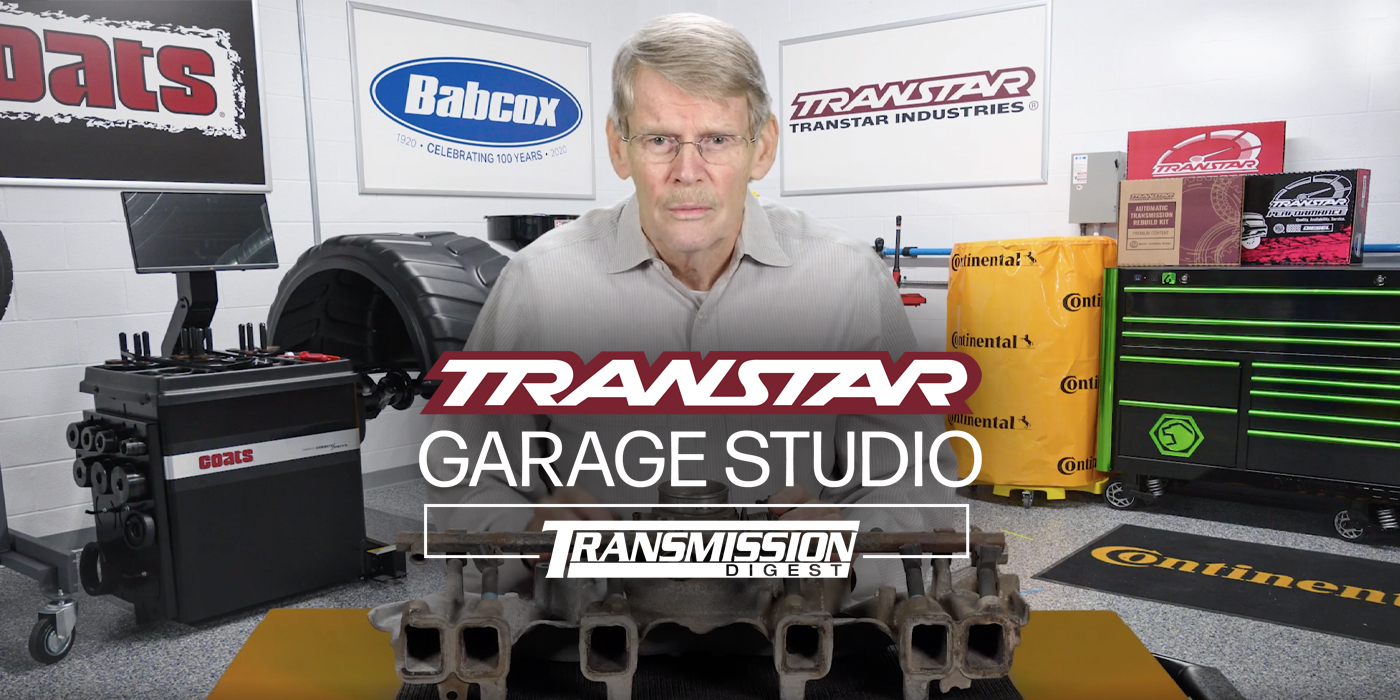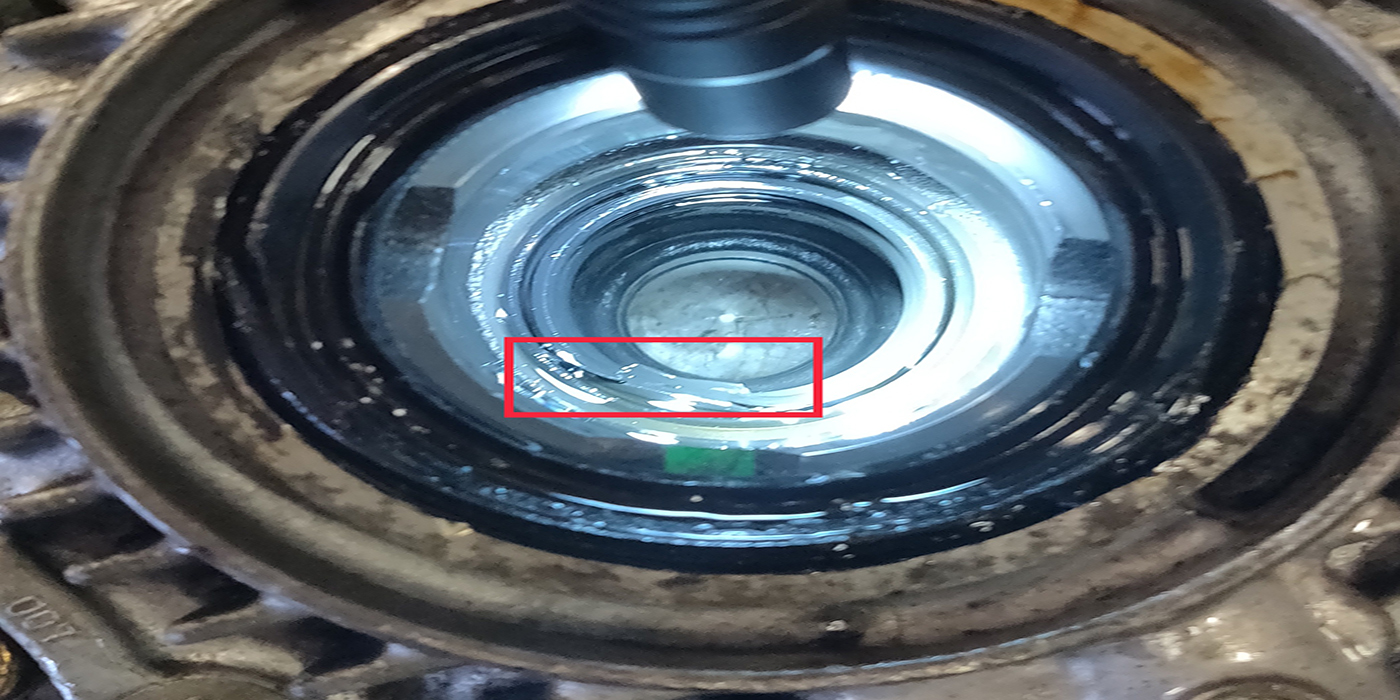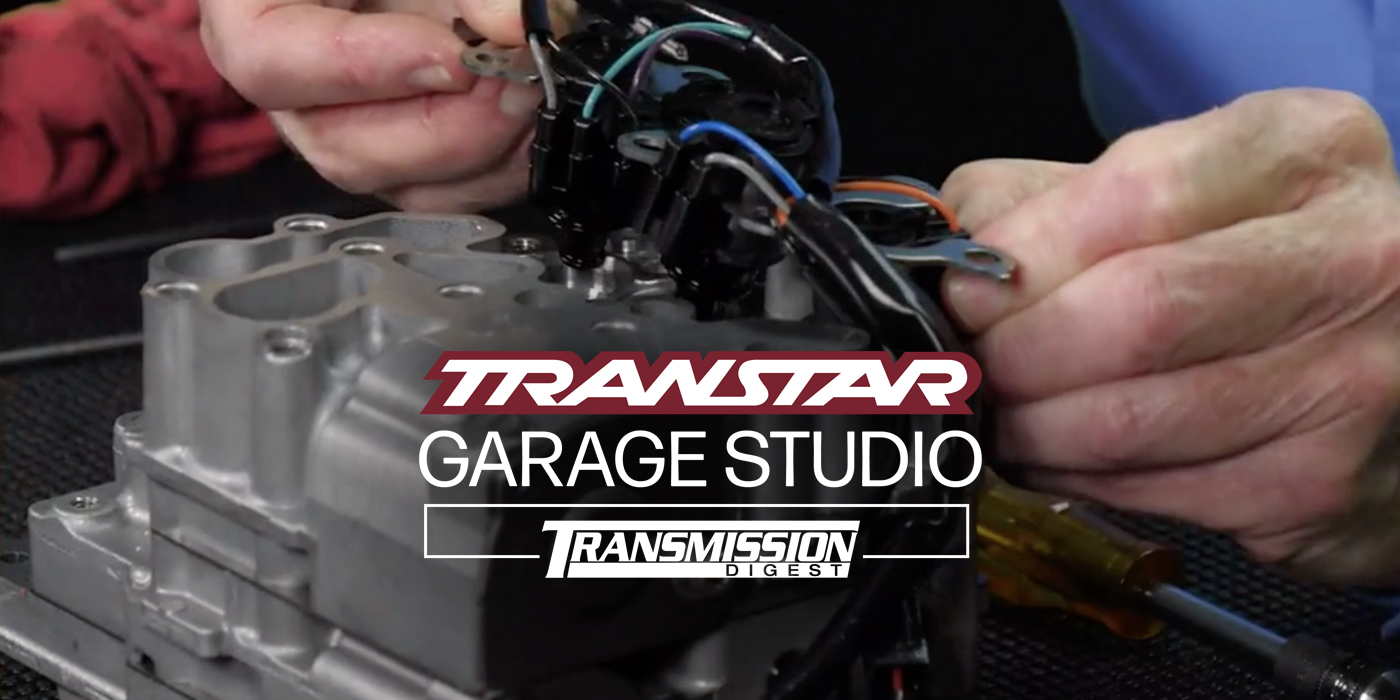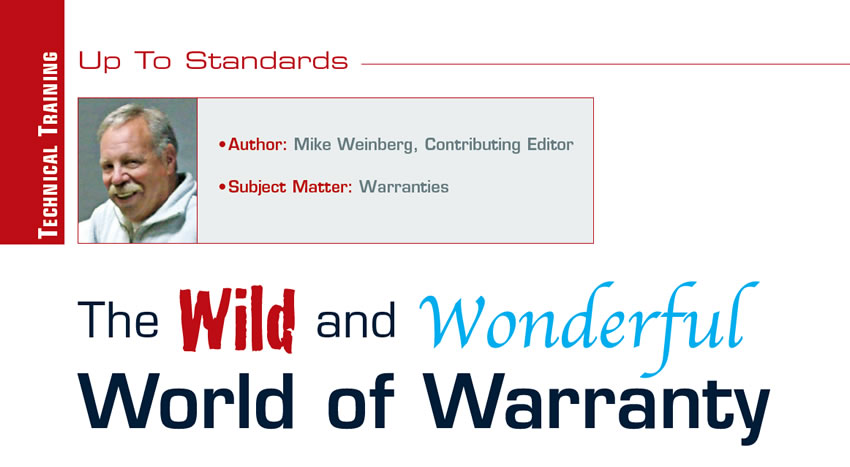
Up to Standards
- Author: Mike Weinberg, Contributing Editor
- Subject Matter: Warranties
In the auto-repair industry it is customary to warrant the product we provide to the customer for a period of time and mileage. A warranty is defined as a promise to the customer of a level of performance for the product they are buying to ensure that for a specified period any problems or failure of the product will be repaired or replaced at no expense to the customer. This sounds like a fairly simple issue, but it is anything but in the United States of Litigation.
A warranty that is correctly written can be a powerful sales tool in getting the customer to buy work from your shop. The automakers are now using the warranty as a weapon to return more vehicles to the dealers’ service bays by providing several years of preventive maintenance within the warranty. Such provisions have put a hurting on the quick-lube business, and the longer warranty options have created a loss of business for all phases of auto repair until the vehicles come out of the warranty period.
On the other hand, a poorly written or unwritten warranty will open up a shop to all manner of expenses that go far beyond the purchase price of the work performed. If you write on your repair order “Warranted for 12 months or 12,000 miles” you have put yourself in a very dangerous situation. If your customer’s vehicle breaks down during the warranty period while they’re on vacation, a court may rule that you have to compensate them for the entire vacation, plus the cost of the repairs to get the vehicle back on the road. The reason for this is federal law, the Magnusson/Moss act. This law states that you must specify (in writing) what is and is NOT warranted. This in legal terms is an express warranty. You also must state in your warranty that there are implied warranties that may not apply to the customer. Implied warranties are those that are governed by the laws of the individual states.

Automakers provide a warranty with every new vehicle. In the purchase price of the car, they package individual costs associated with the vehicle. The dead-nuts cost of the car or truck itself, advertising costs, legal costs (they are self-insured), warranty costs and multiple other expenses all go into arriving at a purchase price to the end user.
It has become fashionable in these times to offer extended-term warranties to compete for business. You can offer a standard local warranty; a national warranty; or a three-, four- or five-year warranty as a persuasive measure to get your customer to sign up for the job. The automakers put an amount of money aside from every vehicle into a warranty expense fund, and so should you. If you are charging a fee above and beyond for a longer warranty, put that extra money in a separate account, which is your warranty fund. If you fail to do so and just spend that money, any comebacks that occur under warranty will be painful, to the max.
A secondary consideration is that the number of warranted vehicles you have on the road at any time will be considered a liability on your balance sheet. Now, they won’t all come back on the same day, but if you try to sell your business, a real businessman will ask that you put an appropriate amount of money in escrow as a warranty fund so that he does not have to pay for comebacks on jobs he did not earn money on. The escrow period will be long enough to cover all the liability generated by the volume of cars under warranty that are on the road at the time of sale, and when that period has elapsed, the balance left will be given to you.
It is possible to have an attorney write you a good legal warranty, but it will be costly and untested. You can join a service organization such as ATRA and use its warranty that has been proved judge proof over the years. At the same time you will get technical help and other services that make such a membership a great investment.
However you do it, there are many important issues to be covered in a warranty to make it legal under federal and state laws. The time and mileage period; the customer’s responsibility to maintain the unit properly during the warranty; exclusions for abuse and misuse such as racing, accidents, commercial use, modification of your product or the vehicle from its intended design; and a host of other conditions will apply.

One important and often-overlooked feature is a stop-loss clause. The stop-loss clause limits the total amount that any warranty can cost you by limiting the amount to the total dollars that the customer paid. In other words, refunding the customer’s initial cost is your outside liability. Do not try this at home, and be really careful about anything you put in writing.
One really gray area that plagues the repair industry is a transmission repair. When you rebuild a transmission you are – or should be – working from a certain standard, which includes the parts you will replace in any unit rebuilt. This usually would include new clutches and steels, seals, gaskets, bushings, filter, bands, a torque converter etc. Now you are going to repair a transmission because all it needs is one clutch pack and a front seal. How do you warrant that repair so that you aren’t responsible if something that you didn’t replace breaks or wears out and the customer wants you to buy it under the warranty. Some jobs you are better off never taking in.
Another side of the warranty is that which you receive from your suppliers. If you buy a new unit from a supplier, you are not getting a warranty from the supplier, but from the manufacturer of the unit. If there is a problem under warranty that may be related to the unit, that manufacturer has the right under the warranty to inspect the suspected failed unit and either repair or replace it to fulfill its obligation. This can be a time-consuming issue as the unit is returned to the factory for repair. Make sure that you read and understand the warranty the company provides you with the new unit or part, and educate your customer.
When you buy a reman unit, the same thing applies, and on it goes with new parts. You are entitled to a replacement part, but will the supplier pay for labor? Usually not. We are living in a “big-box-store” world, where in that ultra-competitive market they have educated everyone: Just bring it back for any reason and they will get you another one. Those days are coming to an end as many of these stores have taken huge losses and have been gamed by their customers. Make sure that the problem is actually with the new or reman unit you have bought and not somewhere else in the vehicle or you will wind up paying freight and labor for sending back a good unit.

Time is always a problem with a warranty, as the customer is without his vehicle. If a unit needs to be returned to the manufacturer for inspection, you may have to buy another one and receive a credit if the original unit is found defective to quickly reunite your customer with his car.
To maintain the warranty you have received from your supplier, you need to make your customer follows certain conditions under the warranty you provide. First, for every unit you put out, you must have the customer come back after two weeks for a free checkup. This ensures that there are no leaks and that all systems are operating correctly. It is very common with manual transmissions and transfer cases to find some metallic debris on the drain plug after 500 miles. This occurs because new gears, chains etc. will shed some small debris as they wear into the opposing parts. The purpose of the two-week checkup up is to change the oil and get rid of the newly generated debris before it has a chance to contaminate the bearings.
Then you have your customer return every 15,000 miles for a lube change and inspection that is necessary to keep the warranty in force, just as the car dealer will want to see the service records before making a warranty claim. If you have not provided the proper routine service as outlined in the owner’s manual, the dealer and the factory will refuse to warrant the parts. Try turning in a lease car at the end of the term without the proper service receipts. You will be billed for it and for any excess mileage and wear and tear, which can run into lots of money. You need to insist on the same thing to maintain a warranty.
Another issue that is ever more common today is vehicle modification. Make sure that the warranty you issue does not permit vehicle modifications that go over the design limits for the vehicle as built by the factory. Let’s say you do a transmission for a guy and during the warranty he gives it to his son. Junior decides that he wants to put 35-inch tires on it and chip the computer to get another 100 horsepower. I don’t think you signed up for that. We see these problems daily where a customer calls and says that his customer blew up a five-speed transmission in his diesel pickup, which is now producing 1,000 lb.-ft. of torque. The only defense for this is a carefully crafted warranty and educating the customer. If you want more than the factory provided, you are out of warranty and it is your problem. Remember that a well-written, legally correct warranty protects both the customer and the shop. Do not neglect this issue, as the comeback can be frightening.

Mike Weinberg is president of Rockland Standard Gear.










